Looking for an Unforgettable Day Trip from Tokyo? Try Kawagoe, Japan
When I think about the countries I’m most eager to return to once it’s safe to travel again, Japan is near the top of my list. I spent a wonderful week there in 2016, staying in Kyoto and Tokyo and visiting Nara and Nikko on day trips. One destination that wasn’t even on my radar at the time, though, was Kawagoe. But after chatting with travel blogger Noel Cabacungan about why he loves this ancient city, I’m certain a day trip from Tokyo to Kawagoe will be on my next Japan itinerary.
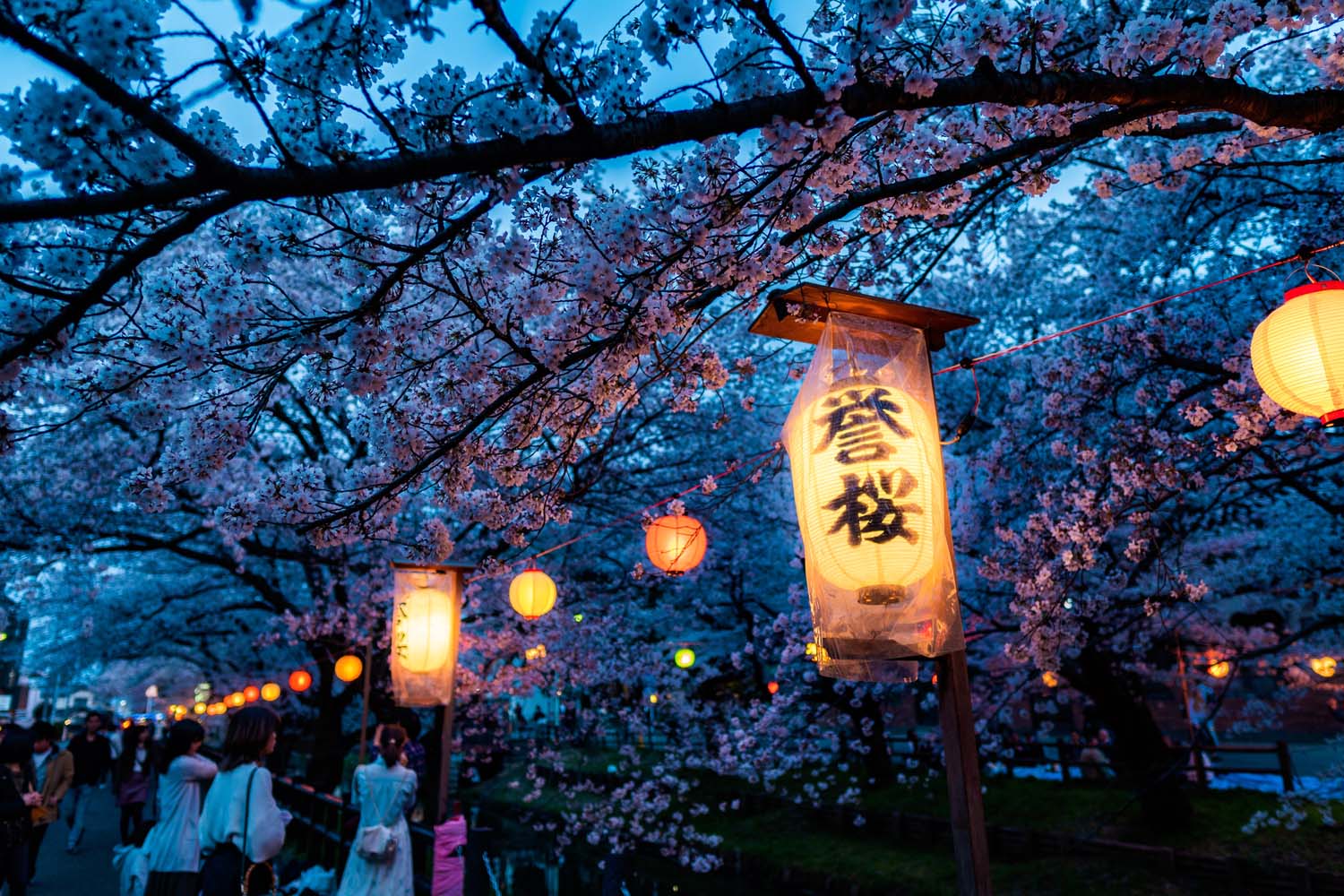
Kawagoe, Japan (photo credit)
Noel, a travel blogger at Trooper Travels, has a sister living in Kawagoe, Japan so he’s been frequenting the city since 2004. Kawagoe is a small city with beautifully preserved, 400-year-old architecture. Located in Saitama Prefecture, Kawagoe sits just 30-45 minutes by train from Tokyo.
Thanks for joining me, Noel! What do you love about Kawagoe, Japan? What makes it special to you?
Kawagoe is one of the many places in Japan that preserves the architectural features from the olden times, particularly the traditional elements of the Edo Period (1603-1868). As a traveler who finds special interest in unique architecture and history, Kawagoe easily became my favorite city in the country.
But one of the key aspects that makes Kawagoe special is that the main tourist spots are at walking distances to each other. Being so close to Tokyo, arriving at the capital would make a visit to Kawagoe very easy.
I love the sound of that! What’s your all-time favorite spot in Kawagoe?
The Kawagoe Hikawa Shrine is my favorite spot in the city. The temple itself can be easily outshined by any other structure or landmark in the city, but the fact that the site enshrines five major Shinto deities, two of which are considered couples, is what makes this spot most special.
A couple deities bestowing love charms and spiritual blessings? Sign me up for that!
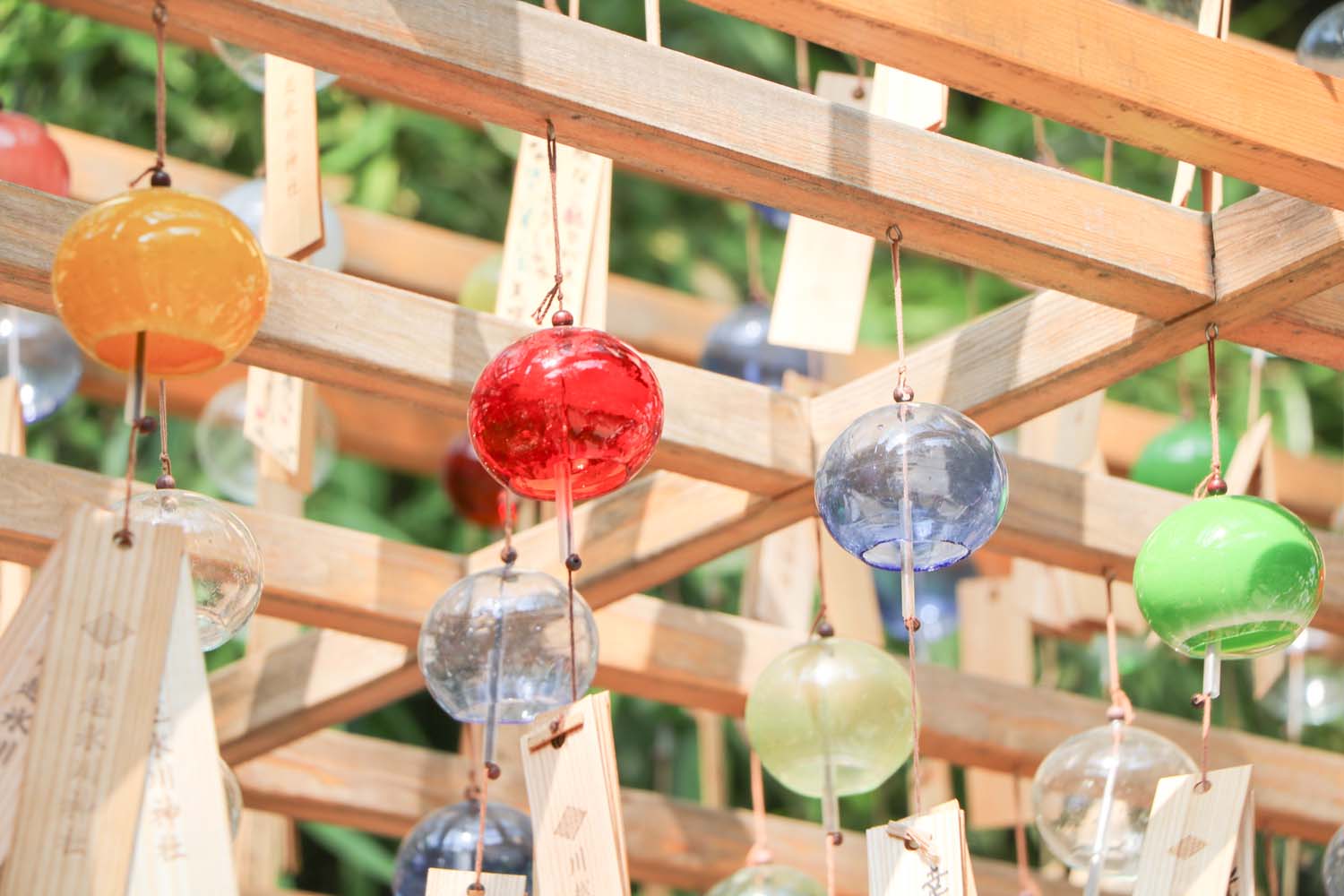
Kawagoe’s Hikawa Shrine (photo credit)
If a traveler only had 24 hours in Kawagoe, what are some places you’d tell them they absolutely can’t miss?
There are four main areas of interest one should not fail to visit when in Kawagoe – The Kurazukuri no Machinami (Old Warehouse District), the Kawagoe Hikawa Shrine, the Kawagoe Castle Ruins, and Kitain Temple. However, if really pressed for time, one should not fail to visit the Old Warehouse District.
As CNN Travel described, this is the most authentic historical site throughout Japan. It houses several historical landmarks such as the Toki no Kane (Bell of Time Tower), the symbol of Kawagoe, and the clay-walled warehouses where the traditional elements in terms of service and architectural style are still being maintained. It is also considered one of the 100 Historical Sites of Beautiful Japan.
That sounds incredible! What should visitors know about Kawagoe’s history?
Because of its close proximity to Tokyo, Kawagoe used to be the center of commercial trade in the region. Merchants built the clay-walled warehouses because of their flame-resistant characteristics, which proved very helpful when the Great Fire of Kawagoe engulfed the whole town in 1638.
What’s your favorite off-the-beaten-path thing to do that wouldn’t be found in a typical guidebook?
The Shingashi River running around the city of Kawagoe passes at the northwestern end of the Old Warehouse District. This is a sweet spot I always frequent to either rest after hours of strolling around the city or just to relax and watch the wild ducks bathing.
I find that this spot personifies the Japanese culture of cleanliness. This is just a very narrow river (almost just a creek) running around the city, but the water is so clean, and no litter or plastic wrappers can be seen stuck on the crevices.
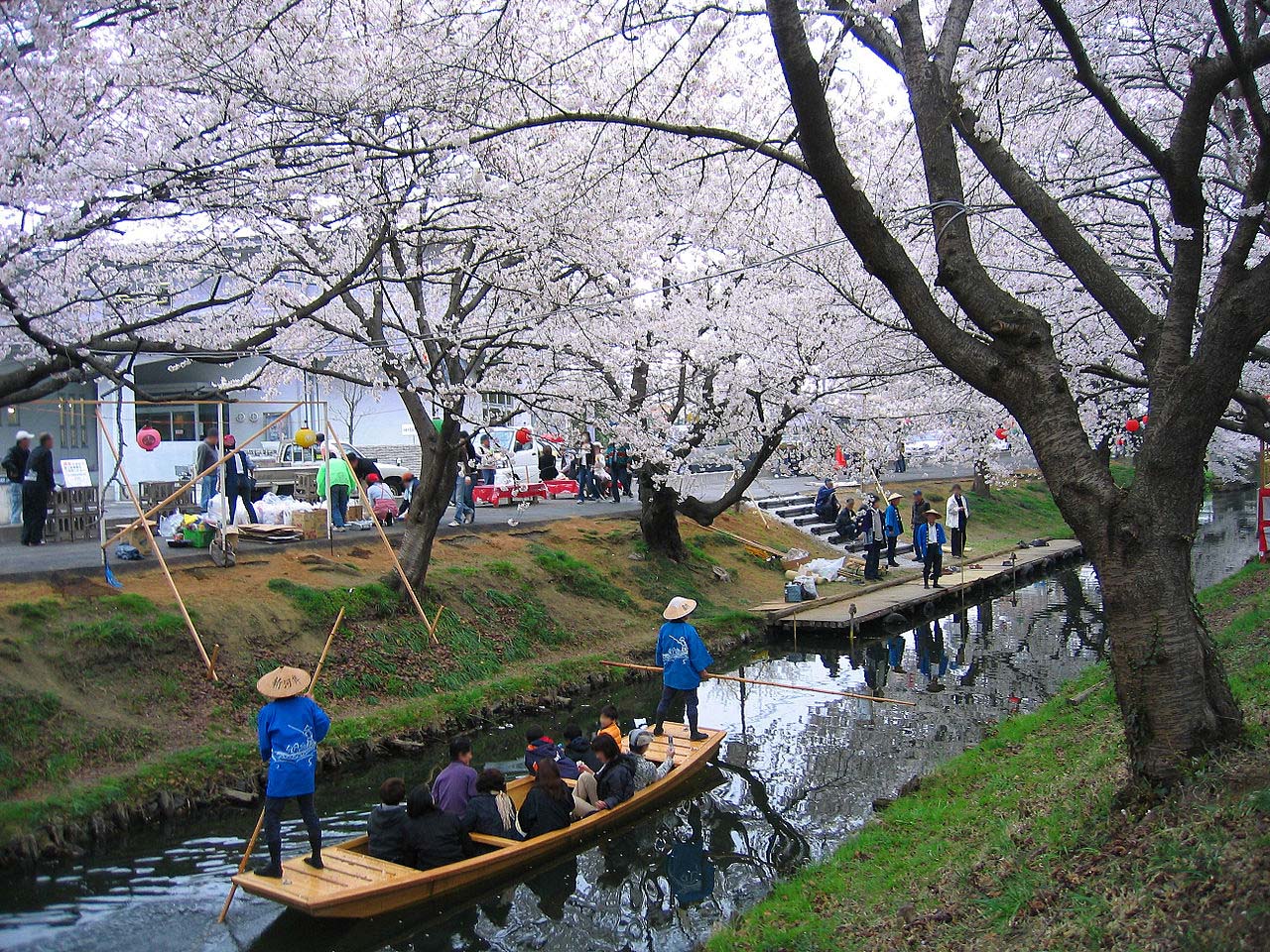
The Shingashi River (photo credit)
Is there any food, dish, or cuisine that you MUST try when you’re in Kawagoe? Where’s the best place to try it?
Sweet potato is a very popular crop in Kawagoe. This root crop has dominated the local street food scene – sweet potato soft cream, sweet potato gyoza and onigiri, sweet potato noodles, sweet potato chips and sticks, among many others, which are sold all over the city.
It happened because after the war, sweet potato became a food staple in Kawagoe due to its ease of cultivation. Nowadays, Kawagoe remains famous for its sweet potatoes, and sweet potato tours are conducted during the harvest season.
Of course, one should not forget to try another popular dish in Kawagoe, the unagi (eel). During the Edo Period, it was forbidden to eat pork and other meat, and it is for this reason that eel dishes became a local special dish.
You’ll find several unagiya (restaurants specializing on eel dishes) around the old warehouse district and all-over the city.
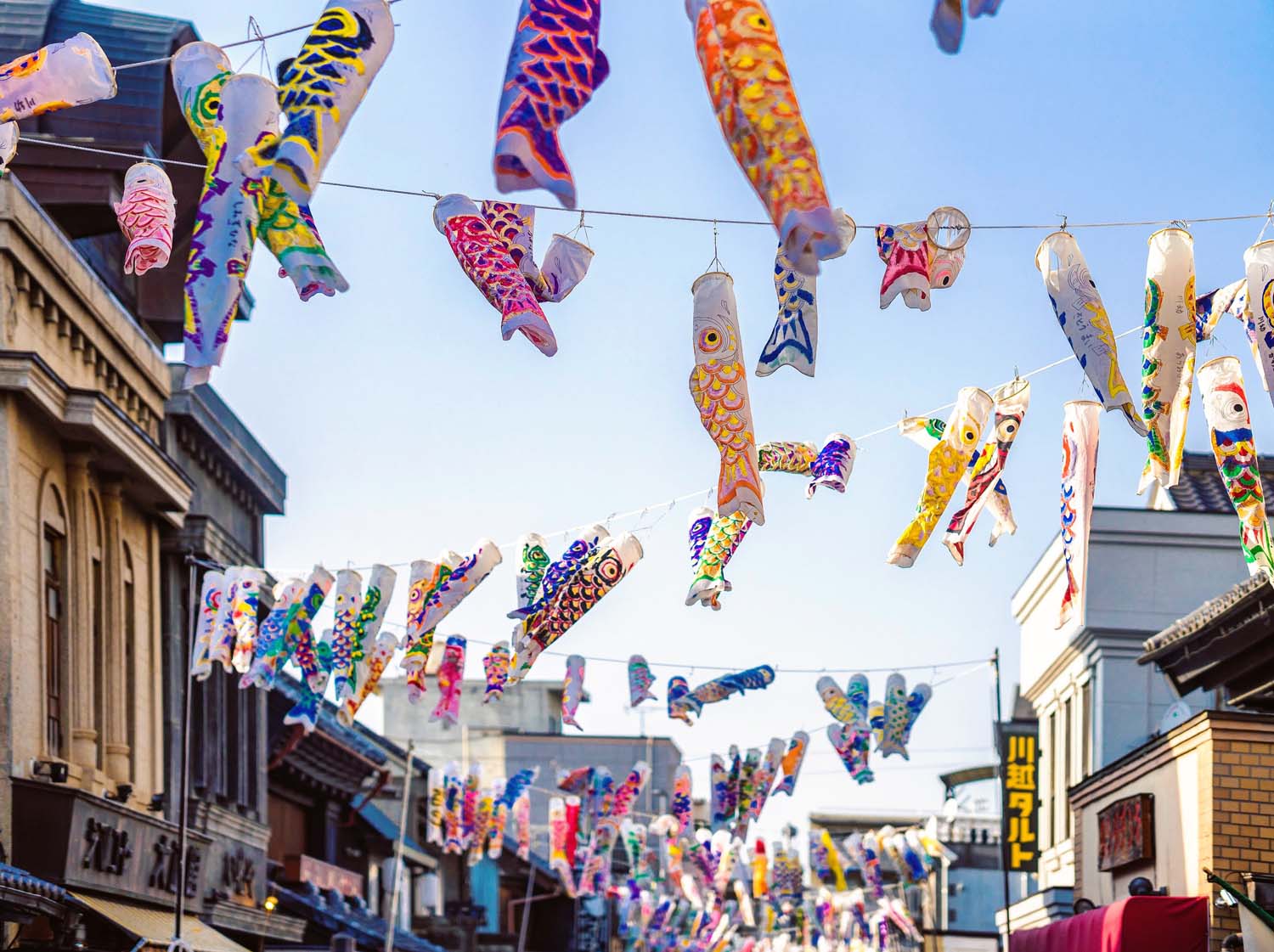
Festive Kawagoe (photo credit)
Where would you recommend tourists stay when visiting?
You don’t really need to stay in Kawagoe. You can have the whole day exploring the city and go back to Tokyo to end the night. Tokyo is just 30-45 minutes by train to Kawagoe. It will perfectly fit the itinerary for any day trip from Tokyo.
That’s great! Given how easy Japan’s train system is, I was on the lookout for other day trips from Tokyo when I was there. What are the most photogenic spots in Kawagoe?
There are many photo-worthy spots, landmarks, and structures all over Kawagoe, but if we are going to be season-specific, the best spot to catch the burst of colors during spring and fall is at the Shingashi River at the back of the Kawagoe Hikawa Shrine. I haven’t actually been to this spot during the peak season, but seeing the cherry trees lining both sides of the river makes it a truly magical spot to visit during these two seasons.
If you happen to arrive a bit later during those seasons, the next spots you should visit are the Kitain Park at the back of the Kitain Temple and the Kawagoe Castle Ruins, where the trees bloom and change colors at a later time.
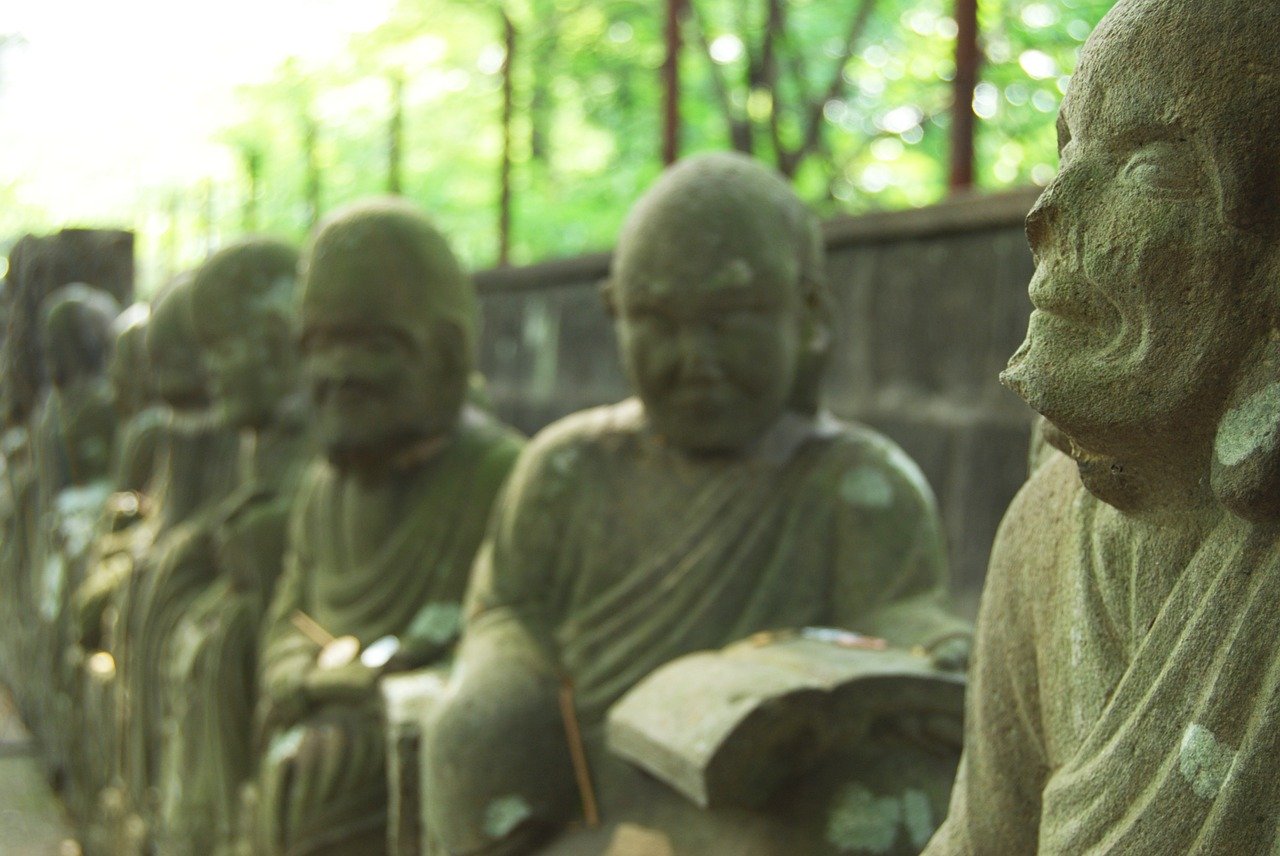
Kitain Temple (photo credit)
What tips do you have for travelers looking to avoid the crowds?
To avoid the crowds, visit Kawagoe on a week day (and during the fall season, if possible). Kawagoe is yet to be a tourist hotspot, but, being so close to Tokyo, the city can be pretty crowded during the weekends.
What should visitors know about transportation around the city?
There are four train stations in Kawagoe, but the one nearest to the Old Warehouse District is Hon-Kawagoe Station. It’s just 30 minutes by train from Ikebukero (via Tobu Tojo Line), and it’s just 10-12 minutes by foot to the main street.
Though I’d always recommend visiting the sites by foot, there are tourist buses (COEDO) that take tourists from site to site, or you can avail of the one-day pass and take the regular Kawagoe Loop Bus from Kawagoe Station.
Sounds easy to get around! Anything else travelers should know about Kawagoe?
As CNN Travel describes, Kawagoe is one of the most authentic historic towns in Japan. Not even Kyoto or Nara can beat Kawagoe in this aspect.
I have written a very detailed guide to visiting Kawagoe, which you’ll find very helpful, even if you’re solo traveling in Japan for the very first time.
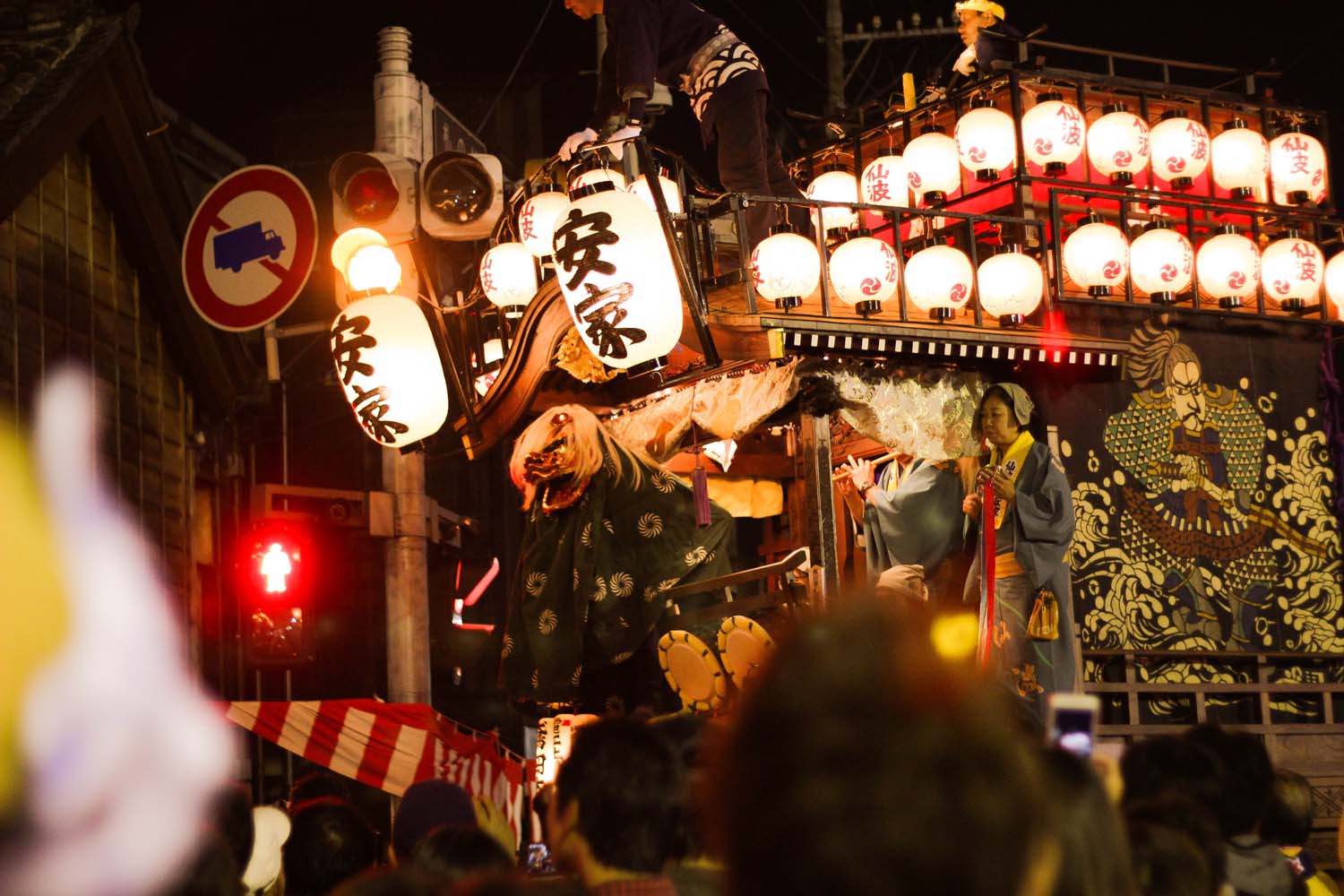
A celebration in Kawagoe (photo credit)
Thank you so much, Noel, for sharing your love for Kawagoe, Japan! Be sure to check out Noel’s blog, Trooper Travels, and follow him on Twitter, Youtube, and Instagram.
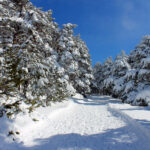
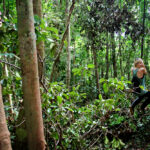

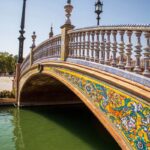
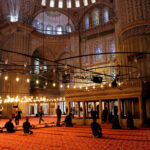





We love your blog!!! very inpirational!
We love your blog!!! very inpirational!
very inpirational!
gasdgasgsadagsd
gsdagasgddsagsgdsa
Hello, Venga Vale Vamos, our family goes on a trip once a year. We have been traveling together since 2002; our family has grown from 28 pax then to 50 pax today. While most of our trips were in Europe (for the X’mas markets), we have spent X’mas and New Year in Japan, a few times in the past. This year, we will be in Tokyo from 25 Dec 2024 till 5 Jan 2025. We would like to do 2 day trips, ie one day trip in Kawagoe and another day trip in Yokohama. We are 41 adults and about 9 children including 4 toddlers and 5 children. We would like your advice how we can get a guide for these 2 day trips. Would appreciate hearing from you. Thank you very much.